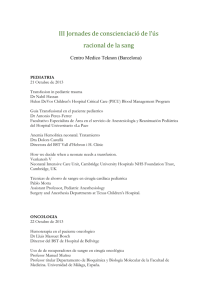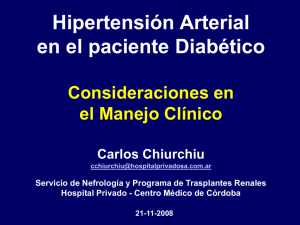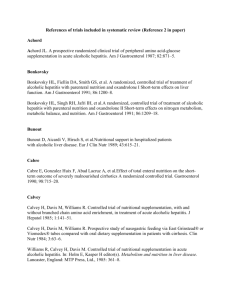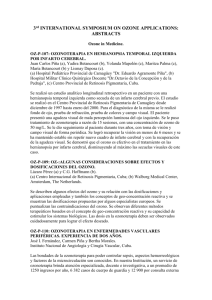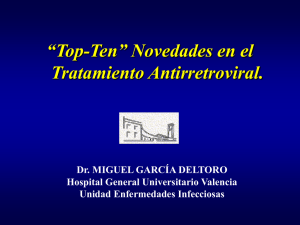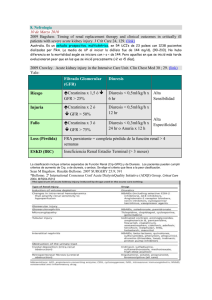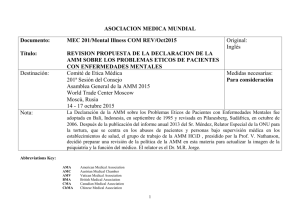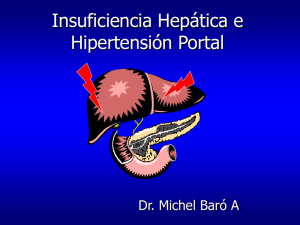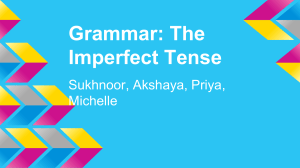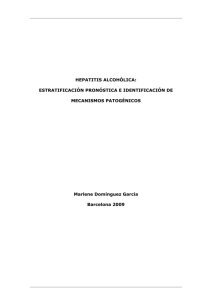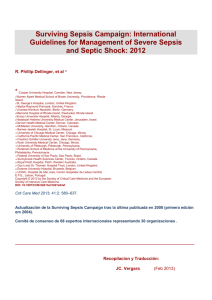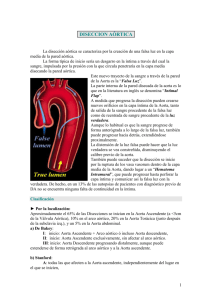Linfoma esplénico de la zona marginal:
advertisement
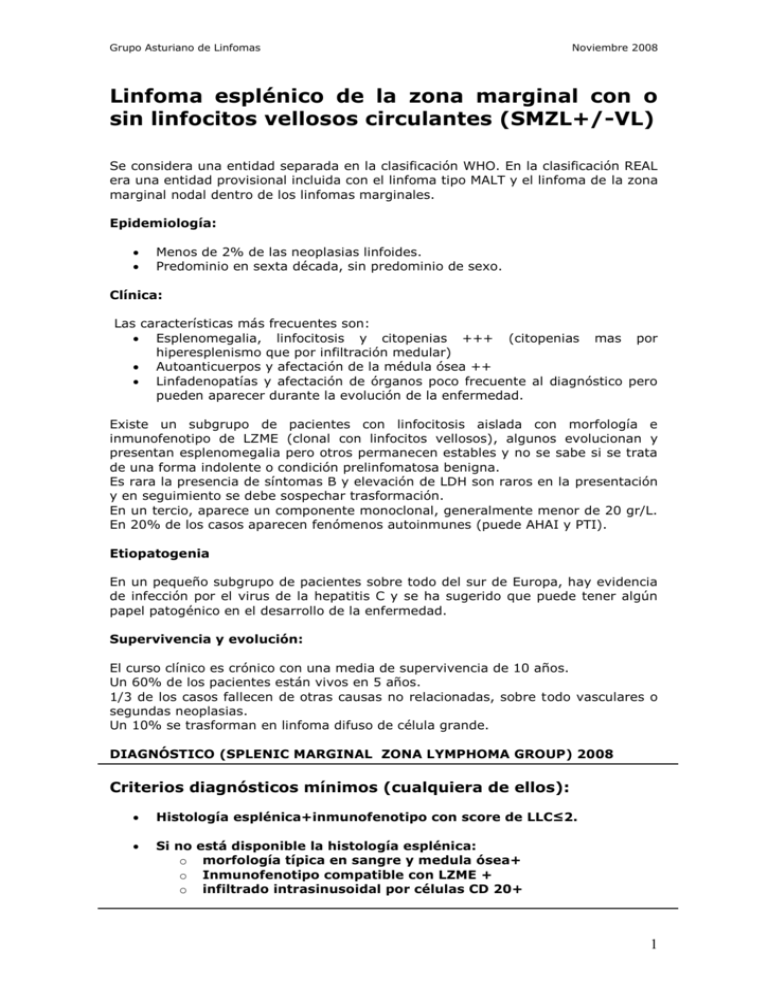
Grupo Asturiano de Linfomas Noviembre 2008 Linfoma esplénico de la zona marginal con o sin linfocitos vellosos circulantes (SMZL+/-VL) Se considera una entidad separada en la clasificación WHO. En la clasificación REAL era una entidad provisional incluida con el linfoma tipo MALT y el linfoma de la zona marginal nodal dentro de los linfomas marginales. Epidemiología: Menos de 2% de las neoplasias linfoides. Predominio en sexta década, sin predominio de sexo. Clínica: Las características más frecuentes son: Esplenomegalia, linfocitosis y citopenias +++ (citopenias mas por hiperesplenismo que por infiltración medular) Autoanticuerpos y afectación de la médula ósea ++ Linfadenopatías y afectación de órganos poco frecuente al diagnóstico pero pueden aparecer durante la evolución de la enfermedad. Existe un subgrupo de pacientes con linfocitosis aislada con morfología e inmunofenotipo de LZME (clonal con linfocitos vellosos), algunos evolucionan y presentan esplenomegalia pero otros permanecen estables y no se sabe si se trata de una forma indolente o condición prelinfomatosa benigna. Es rara la presencia de síntomas B y elevación de LDH son raros en la presentación y en seguimiento se debe sospechar trasformación. En un tercio, aparece un componente monoclonal, generalmente menor de 20 gr/L. En 20% de los casos aparecen fenómenos autoinmunes (puede AHAI y PTI). Etiopatogenia En un pequeño subgrupo de pacientes sobre todo del sur de Europa, hay evidencia de infección por el virus de la hepatitis C y se ha sugerido que puede tener algún papel patogénico en el desarrollo de la enfermedad. Supervivencia y evolución: El curso clínico es crónico con una media de supervivencia de 10 años. Un 60% de los pacientes están vivos en 5 años. 1/3 de los casos fallecen de otras causas no relacionadas, sobre todo vasculares o segundas neoplasias. Un 10% se trasforman en linfoma difuso de célula grande. DIAGNÓSTICO (SPLENIC MARGINAL ZONA LYMPHOMA GROUP) 2008 Criterios diagnósticos mínimos (cualquiera de ellos): Histología esplénica+inmunofenotipo con score de LLC≤2. Si no o o o está disponible la histología esplénica: morfología típica en sangre y medula ósea+ Inmunofenotipo compatible con LZME + infiltrado intrasinusoidal por células CD 20+ 1 Grupo Asturiano de Linfomas Noviembre 2008 Estudios al diagnostico: Examen físico con valoración del estado general. Hemograma con recuento diferencial Reticulocitos Coombs directo Bioquímica renal y hepática que incluya calcio y LDH. Inmunoglobulinas suero y orina y B2 microglobulina ANA, anti DNA, AMA, antitiroideos y Factor reumatoide. Serología de hepatitis C (si es posible PCR para el RNA del virus y genoma) Serología de HIV Serología de hepatitis B si se considera tratamiento por el riesgo de reactivación (Antígeno y anticuerpo de superficie, anticuerpo y antígeno core, y antígeno e de la hepatitis B. Si es positivo carga viral y consulta con digestivo) Morfología en sangre periférica (linfocitos vellosos circulantes) e inmunofenotipo si afectación en sangre periférica (incluir Kappa/lambda, CD 19, CD 20, CD 5, CD 23, CD 10, CD 43, CD 103) Aspirado de medula ósea con inmunofenotipo Biopsia de médula (infiltrado linfocítico intrasinusoidal) con inmunohistoquímica (se recomienda incluir CD 20, CD 3, CD 5, CD 10, Bcl-2, Kappa/lambda, CD 21 o CD 23, ciclina D1, IgD, CD 43, Anexina-1. TAC cuello, tórax y abdomen. Estudios opcionales: Serología de HP si síntomas gástricos, Serología EB y CMV. Si anticuerpos antitiroideos: estudios de función tiroidea. FISH/estudio citogenético para excluir casos con diagnostico diferencial incierto con CLL o linfoma del manto en casos CD 5+ o folicular. Puede ser útil estudio t(11;18), t(11;14) o t(14;18). RT PCR para t(11;18). Crioglobulinas si HVC positivo. Valorar PET o PET/TAC si sospecha de trasformación. Citología en sangre: La afectación de sangre periférica es común en LZME, y se caracteriza por la presencia de linfocitos vellosos circulantes con núcleo redondeado con cromatina condensada y citoplasma basófilo, con vellosidades cortas distribuidas de manera desigual por el citoplasma, o concentrado en uno o los dos polos de la célula. Además puede haber otras células: linfoplasmocitoides, linfocitos con núcleo hendido o con citoplasma más abundante pálido. La presencia de células grandes con nucleolo y cromatina inmadura se correlaciona con progresión o trasformación a linfoma de célula grande. Las muestras conservadas durante unas horas con anticoagulantes pueden perder las vellosidades y si se sospecha esta patología se recomienda repetir con sangre fresca. 2 Grupo Asturiano de Linfomas Noviembre 2008 Inmunofenotipo Típico: CD 10-, CD5-, CD 20+, CD 23-/+, CD 43-/+, ciclina D1-, anexina 1-, CD 103-. Escore LLC 0-2. Generalmente IgM e IgD o IgM solo. CD 20+, CD 22+, CD 24+, CD 27+, FMC 7+ y expresión fuerte de CD 79 b. CD 5-, CD 10Otros: CD 79 en 75%, CD 11 c en 50%, CD 23 en 30%, CD 103 en 10%, CD 25 en 25%, CD 5 en 20% HC 2 o CD 10 muy infrecuente. Coexpresión CD 5 y CD 23 rara. Aspirado y Biopsia de médula ósea: El aspirado de médula ósea generalmente no es suficiente para el diagnóstico y se observa peor la morfología vellosa que en sangre periférica. En la biopsia de medula se observa un infiltrado intrasinusoidal, con la progresión llega a ser nodular (muy característico pero no enteramente específico) Folículos con centro germinal conservado rodeado de un anillo de células de zona marginal. Morfología monomórfica con células neoplásicas de pequeño a mediano tamaño, núcleo redondeado u oval con contorno regular y citoplasma como un anillo fino. Histología esplénica: Desde el punto de vista macroscópico presenta un patrón miliar-like que se corresponde con un infiltrado linfoide micronodular de la pulpa blanca esplénica que está centrado en los folículos preexistentes. Los nódulos tumorales están compuestos por una zona central de linfocitos pequeños reemplazando la zona del manto y por fuera una zona de células de mediano tamaño con citoplasma claro en la localización de la zona marginal. La pulpa roja está afecta en muchos casos. En ocasiones existe una diferenciación plasmacítica. Estado mutacional IgVH Mutaciones somáticas de IgVH en la mitad de los casos. Citogenética: Son comunes las aberraciones cromosómicas complejas (80% cariotipo anormal). ganancias de 3 q (20-30%), y 12 q (15-20%) deleción 7q sobre todo 7q 32. Hay algunos casos con t(11;14) pero el punto de ruptura es diferente al linfoma del manto. Deleción del 17p53 rara (5%) pero la perdida monoalélica de p53 se encontró en el 17% de los casos. 3 Grupo Asturiano de Linfomas Noviembre 2008 DIAGNOSTICO DIFERENCIAL: Sobre todo con linfomas de bajo grado nodales primarios si afectan al bazo. Linfoma MALT: Se diferencian por la ausencia de t(11;18) en LZME y la expresión de IgD que es rara en los MALT. Linfoma folicular: Es difícil el diagnóstico diferencial en casos de LF sin expresión de bcl-2: útil morfología, patrón MIB-1, células del manto residuales, IgD y morfología en medula y ganglio. CD 10 y bcl-6, la t (14;18). Linfoma del manto: Morfología monomorfa y ciclina D1. LLC: CD 23+, CD 43+, CD 5+, IgD + y baja proliferación. Linfoma linfoplasmocítico: El LPL es un diagnostico de exclusión. La deleción 7q, ganancias de 3q y infiltración intrasinusoidal están a favor de LZME mientras que del 6q favorece el LPL. TL y TL variante Diferencia por el Inmunofenotipo, pero en casos variantes puede ser muy difícil. Proliferaciones benignas de células B como linfocitosis policlonales B con histología que semeja LZME sobre todo en casos sin síntomas o sin monoclonalidad. FACTORES PRONÓSTICOS: El “Intergrupppo Italiano Linfomi”1 estudio los factores pronósticos en 309 pacientes con LEZM e identificó los siguientes factores de riesgo: Hb menor de 12 gr/dl LDH superior al vn Albúmina menor de 3,5 gr/DL Tres grupos de riesgo: Sin factores pronósticos adversos 41% Con un factor adverso 34% Con dos o tres factores adversos 25%. Otros CSS 5 años 88% 73% 50% factores que se han visto en relación con progresión: Linfadenopatía Alto contaje linfocitario Sitios de infiltración no hematopoyéticos. Alta fracción de crecimiento Del 7q Mutaciones p 53 4 Grupo Asturiano de Linfomas Noviembre 2008 Manejo del LEZM No existen criterios uniformes de manejo por falta de estudios prospectivos. Al igual que en otras enfermedades linfoproliferativas de bajo grado como la LLC, el tratamiento se debe considerar en pacientes con enfermedad activa, mientras que en los pacientes con enfermedad indolente sin progresión es razonable la “política de esperar y ver”. Se debe tener en cuenta la naturaleza indolente de la enfermedad, edad, comorbilidades por lo que el tratamiento generalmente está más dirigido al control de los síntomas que a la erradicación del linfoma. LEZM+/- LV precoz/asintomático: Sin síntomas B Citopenias ausentes o leves No esplenomegalia bulky Linfadenopatías no significativas menores de 2 cm No evidencia de hemólisis o sintomática o activa. Puede estar infiltrada la medula pero con buena reserva medular. LEZM+/- LV activo o sintomático: Citopenias sintomáticas Esplenomegalia progresiva Linfocitosis creciente de forma rápida Desarrollo de linfadenopatías o afectación extranodal Opciones terapéuticas: Esplenectomía en pacientes que pueden ser candidatos a cirugía. En la mayoría respuestas y la mitad no requieren más tratamiento. En ocasiones se requiere para establecer el diagnóstico. Alquilantes: beneficio marginal. 2/3 no responden a clorambucil, los que responden generalmente al poco tiempo recidivan y requieren otros tratamientos. Análogos de las purinas: Fludarabina2, 3, 4 , 2 Cd A 5, pentostatina 6en combinación o no con Rituximab y rituximab en monoterapia7, 8, 9, 10: son tratamientos eficaces con mas calidad de respuesta y SLP que alquilantes. Se debe considerar como primera línea en pacientes no candidatos a cirugía o que progresan tras la esplenectomía. Rituximab en combinación11 En pacientes con infección por VCH: Interferón al 2b, ribavirina o una combinación , se debe considerar en primera línea en los pacientes con infección por este virus. Una minoría se trasforma a linfoma de célula B de alto grado o tienen anormalidades TP53 y peor curso clínico y se deben manejar como los linfomas de alto grado. 5 Grupo Asturiano de Linfomas Noviembre 2008 Propuesta de tratamiento primera línea: Esplenomegalia y sospecha de síndrome linfoproliferativo B: Estudios sangre periférica y médula ósea incluido inmunofijación y EF de proteínas Hepatitis C Positivo Negativo Consulta especialista. Indicado tratamiento Si Tratar Observación Citopenias o síntomas Si No Esplenectomía Rituximab 6 Grupo Asturiano de Linfomas Noviembre 2008 Actitud terapéutica: Enfermedad precoz o asintomática: Watch and wait con vigilancia cada 3-6 meses: EF Hemograma Bioquímica Si datos de progresión reestadiar y tratar. Enfermedad avanzada o sintomática: HVC+: INF solo a dosis de 3x10 6 UI 3 veces a la semana, 6-12 meses o en combinación con ribavirina 1000 a 1200 mg día po. Los regimenes dependerán del genotipo del HVC (valoración por digestivo). Esplenectomía: En pacientes con bazo bulky, hiperesplenismo, candidatos a cirugía y sin adenopatías significativas ni evidencia de HVC. Quimioterapia y/o anticuerpos: Indicación: No candidatos a cirugía. sin esplenomegalia bulky con o Linfadenopatías generalizadas o Citopenias debidas a infiltración medula ósea. o Aumento muy rápido de la expresión en sangre periférica o Afectación extranodal Opciones: o Rituximab 375 mg/m2 semanal durante 4-8 semanas (sobre todo en mayores de 75 años o con I renal) o Fludarabina sola o con ciclofosfamida oral o IV a dosis de LLC. o F o FC asociado a Rituximab o Se ha visto en casos que si la respuesta no es buena, la esplenectomía puede mejorar respuestas y resultados de la quimioterapia. o Si transformación a linfoma de alto grado R-CHOP 14 o 21. o Si AHAI o PTI trata previamente estos desordenes que el LELVC. Tratamiento adyuvante: Previo a esplenectomía, vacunas frente a Pneumococcus, Haemophilus, Meningococcus. Si F, FC: septrim profiláctico o nebulización de pentamida en alérgicos. Profilaxis con aciclovir al día en pacientes con historia previa de HS o HZ. Valorar profilaxis con fluconazol 50-100 mg po. 7 Grupo Asturiano de Linfomas Noviembre 2008 CRITERIOS DE RESPUESTA: Esplenectomía: Mejoría de al menos el 50% de los recuentos sanguíneos, linfocitosis no progresiva, no cambio o mejoría en el grado de infiltración de la médula ósea. QT, Rituximab, INF con o sin ribavirina: RP: 50% o más de mejoría en las manifestaciones de la enfermedad: Resolución o disminución en el tamaño del bazo. Mejoría de las citopenias Resolución o disminución de las adenopatías. La médula ósea debe mostrar disminución de la infiltración linfoide y mejoría de la reserva hematopoyética. RC: resolución de las organomegalias Normalización de los parámetros hematológicos: Hb > 12 gr/dl, Plaquetas >100000, neutrófilos >1,5x10 9/L sin evidencia de linfocitosis clonal ni de infiltración de médula ósea con inmunohistoquímica. No respuesta o enfermedad progresiva: menos de 10% de mejoría de la enfermedad o deterioro respectivamente. MONITORIZACIÓN: Asintomáticos: Vigilar con EF, Hemograma y bioquímica cada 4-6 meses. TAC o estudio de medula ósea solo están indicados si datos de progresión. Esplenectomizados: Cada 4-6 semanas con recuento sanguíneo y bioquímica durante los tres primeros meses y luego cada 6 meses. TAC o estudio de medula ósea solo están indicados si hay datos de enfermedad progresiva. Pacientes con F o FC con o sin Rituximab: Durante el tratamiento se monitorizan cada dos semanas. Si neutropenia G-CSF o profilaxis con ciprofloxacino. Se realiza TAC y estudio de medula ósea tras 4 ciclos y se administran dos más. Rituximab: se revisan tras 6 infusiones y se completa si respuesta hasta 8 INF o ribavirina en combinación: HVB por PCR 8 Grupo Asturiano de Linfomas Noviembre 2008 Test esencial para el diagnóstico Test que pueden influenciar la necesidad y elección del tratamiento. Test que pronóstico: pueden LSZM indicar LLC Citometría de flujo S IgM +++ +/CD5 + +++ CD 23 + +++ FMC7 +++ CD 11c ++ CD 103 CD 123 CD25 + CD27 ++ +++ Inmunohistoquímica DBA44 ++ + IgM,IgD +++ +++ CD10 BCL6 CCND1 CD5 + +++ CD43 + +++ CD23 +++ CD27 ++ +++ AnexinaA1 - el L manto Hemograma y frotis Inmunofenotipo de sangre +/médula Histología de médula +/- bazo Inmunoglobulinas séricas Citogenética/FISH cuando es difícil establecer el diagnóstico. TAC cuello, tórax y abdomen. Función renal y hepática Coombs directo TAC de cuello, tórax y abdomen. Serología de hepatitis B y C. Serología de HIV. Hb LDH Albúmina sérica Anormalidades de p 53 Folicular TL TL-v MALT +++ +++ +++ +++ +++ + +++ +++ +++ +++ +++ +++ +++ +++ - +++ +++ +++ ++ ++ +++ +++ + +++ +++ +++ +++ - + +++ +++ + +++ - +++ +++ + +++ +++ + ++ - + + + - 9 Grupo Asturiano de Linfomas Noviembre 2008 Matutes E. Splenic marginal zone lymphoma with and without villous lymphocytes. Curr Treat Options Oncol. 2007 Apr;8(2):109-16. Arcaini L, Lazzarino M, Colombo N, Burcheri S, Boveri E, Paulli M, Splenic marginal zone lymphoma: a prognostic model for clinical use. Blood. 2006 Jun 15;107(12):4643-9. Epub 2006 Feb 21. 1 Integruppo Italiano Linfomi. The Integruppo Italiano Linfomi (IIL) carried out a study to assess the outcomes of splenic marginal zone lymphoma and to identify prognostic factors in 309 patients. The 5-year cause-specific survival (CSS) rate was 76%. In univariate analysis, the parameters predictive of shorter CSS were hemoglobin levels below 12 g/dL (P < .001), albumin levels below 3.5 g/dL (P = .001), International Prognostic Index (IPI) scores of 2 to 3 (P < .001), lactate dehydrogenase (LDH) levels above normal (P < .001), age older than 60 years (P = .01), platelet counts below 100,000/microL (P = .04), HbsAg-positivity (P = .01), and no splenectomy at diagnosis (P = .006). Values that maintained a negative influence on CSS in multivariate analysis were hemoglobin level less than 12 g/dL, LDH level greater than normal, and albumin level less than 3.5 g/dL. Using these 3 variables, we grouped patients into 3 prognostic categories: low-risk group (41%) with no adverse factors, intermediate-risk group (34%) with one adverse factor, and high-risk group (25%) with 2 or 3 adverse factors. The 5 year CSS rate was 88% for the low-risk group, 73% for the intermediate-risk group, and 50% for the high-risk group. The causespecific mortality rate (x 1000 person-years) was 20 for the low-risk group, 47 for the intermediate-risk group, and 174 for the high-risk group. This latter group accounted for 54% of all lymphoma-related deaths. In conclusion, with the use of readily available factors, this prognostic index may be an effective tool for evaluating the need for treatment and the intensity of therapy in an individual patient. Bolam S, Orchard J, Oscier D. Fludarabine is effective in the treatment of splenic lymphoma with villous lymphocytes. Br J Haematol 1997 Oct;99(1):158-61. 2 We report on the use of fludarabine in four patients with splenic lymphoma with villous lymphocytes (SLVL). All four had relapsed after, or failed to respond to, recommended first-line therapies. In each case fludarabine resulted in a complete clinico-haematological response with minimal toxicity, which, in the two patients with long-term follow-up, proved durable. Fludarabine is effective in the treatment of SLVL and should be considered as both a first-line therapeutic option as well as salvage therapy in this condition. Yasukawa M, Yamauchi H, Azuma T, Takada K, Ishimura M, Fujita S. Dramatic efficacy of fludarabine in the treatment of an aggressive case of splenic lymphoma with villous lymphocytes. Eur J Haematol. 2002 Aug;69(2):112-4. 3 Splenic lymphoma with villous lymphocytes (SLVL) is an indolent lymphoproliferative disorder of mature B lymphocytes. Splenectomy is primarily recommended for treating this disease, and splenic irradiation or alkylating agents may be effective; however, frequent recurrence is observed after these therapies. We report here an unusual case of SLVL in which the degree of splenomegaly and the serum IgM level increased rapidly. Although the effects of splenic irradiation and combination chemotherapy were both unsatisfactory and transient, complete remission lasting for more than 15 months was achieved after two courses of treatment with low-dose fludarabine (15 mg m(-2) daily for 3 d). The present case indicates that treatment with fludarabine is effective for SLVL and recommended as the first-line therapy for elderly patients and those with an aggressive form of the disease. Lefrère F, Hermine O, Belanger C, François S, Tilly H, Lebas de La Cour JC et al. Fludarabine: an effective treatment in patients with splenic lymphoma with villous lymphocytes. Leukemia. 2000 Apr;14(4):573-5. 4 Splenic lymphoma with villous lymphocytes (SLVL) is a B cell chronic lymphoproliferative disorder. Splenectomy and/or chlorambucil are usually regarded as the most effective treatment in SLVL patients. However, a few patients relapse and the second-line treatment remains questionable. In a retrospective study, we evaluated the efficacy and toxicity of fludarabine (FDR) in 10 SLVL patients. The median 10 Grupo Asturiano de Linfomas Noviembre 2008 duration between diagnosis and treatment was 17 months (range, 1-30). Two patients were previously untreated. The patients received FDR 25 mg/m2/day by venous infusion for 5 days with a median of four cycles of chemotherapy (range, 2-6). All patients were assessable: five patients achieved a good and persistent response after a median follow-up of 14 months (5-31), two achieved a good response but relapsed after a follow-up of 15 and 36 months. One out of the three partial responders have a persistent response. The treatment was well tolerated. FDR appears to be an efficient therapy with a favorable toxicity profile for patients in relapse after splenectomy or resistant to CLB. Furthermore it could constitute an alternative to splenectomy in older patients. A longer follow-up and the study of a larger group of patients are warranted to confirm our findings. Riccioni R, Caracciolo F, Galimberti S, Cecconi N, Petrini M. Low dose 2CdA schedule activity in splenic marginal zone lymphomas. Hematol Oncol. 2003 Dec;21(4):163-8. 5 Splenic Marginal Zone Lymphoma (SMZL) is a rare clinicopathological entity among marginal zone lymphomas. SMZL is an indolent lymphoma usually treated by splenectomy. A subset of patients is characterized by a more aggressive clinical course and poor prognosis. Treatment of these cases and second-line therapy for relapsed patients have not been yet identified. We report 10 cases treated with cladribrine (5 mg/m(2)/week) for six courses. Six patients (60%) achieved partial response, two patients (20%) achieved a complete response and the two remaining patients did not respond and died as a result of progression of the disease. The treatment was well tolerated. A total of 60% of the patients had an overall survival rate of 48 months and 24 months progression-free-survival was achieved by 37% with a median time of progression-free-survival of 17 months. Interestingly, in addition to a relevant percentage of hematological remission, some patients also experienced a molecular remission. We conclude that this treatment is safe and well tolerated and is able to induce a substantial number of responses. Our results suggest that this schedule is well tolerated and could be an useful alternative to splenectomy. Iannitto E, Minardi V, Calvaruso G, Ammatuna E, Florena AM, Mulè A, Tripodo C, Quintini G, Abbadessa V. Deoxycoformycin (pentostatin) in the treatment of splenic marginal zone lymphoma (SMZL) with or without villous lymphocytes. Eur J Haematol. 2005 Aug;75(2):130-5. 6 Splenic marginal zone lymphoma (SMZL) is an infrequent B-cell eoplasm that pursues an indolent course. Signs and symptoms, mostly related to ypersplenism, are successfully managed by splenectomy. However, the therapy ofpatients who are not fit for a surgical procedure or who relapse after plenectomy, is still an unsettled issue. PATIENTS AND METHODS: We report a hase-II study on 16 patients with SMZL, three therapy naïve and 13 pretreated, ll showing systemic symptoms or progressive worsening of peripheral cytopenia, ho were treated with pentostatin at a dose of 4 mg/m2 every other week for 6-10 k. In relapsed patients, the median interval between diagnosis and treatment was 6 month (range: 8-49). RESULTS: Overall, 68% of the patients showed a clinical esponse. Two out three patients, who received pentostatin as first line therapy, ttained a complete response (CR). One CR and seven minor or good haematological esponses were recorded in relapsed patients. Treatment toxicity, mostly hematological, proved manageable. With a median follow-up of 35 month the median overall survival (OS) is 40 month and the median progression free survival (PFS) is 18 month. CONCLUSION: Our data show that pentostatin administered every other week has a good degree of activity in the treatment of SMZL and suggest that this schedule could be considered a possible therapeutic option for patients who are not fit for splenectomy or have relapsed. Tsimberidou AM, Catovsky D, Schlette E, O'Brien S, Wierda WG, Kantarjian H,Garcia-Manero G, Wen S, Do KA, Lerner S, Keating MJ. Outcomes in patients with splenic marginal zone lymphoma and marginal zone lymphoma treated with rituximab with or without chemotherapy or chemotherapy alone. Cancer. 2006 Jul 1;107(1):125-35. 7 Department of Leukemia, Unit 428, The University of Texas M. D. Anderson Cancer Center, Houston, Texas77030, USA. atsimber@manderson.org The optimal management of patients with splenic marginal zone lymphoma/marginal zone lymphoma (SMZL) is controversial. The objective of this retrospective study was to compare the outcomes of patients with SMZL who received treatment with rituximab, rituximab plus chemotherapy, or 11 Grupo Asturiano de Linfomas Noviembre 2008 chemotherapy alone. METHODS: The Leukemia Service database was searched for patients with splenic lymphoma who were registered between May 1995 and October 2004. The indications for treatment were the same as those used for patients with chronic lymphocytic leukemia. RESULTS: SMZL was confirmed in 70 patients. The median age was 64 years. The median number of CD20 molecules per cell was 69 x 10(3). Forty-three patients required systemic therapy; rituximab in 26 patients, chemotherapy plus rituximab in 6 patients, and chemotherapy alone in 11 patients. Ten additional patients underwent splenectomy, and 17 patients were in the observation group. The overall response rates were 88% with rituximab, 83% with rituximab plus chemotherapy, and 55% with chemotherapy alone; the 3-year survival rates were 95%, 100%, and 55%, respectively. The 3-year failure-free survival (FFS) rates were 86%, 100%, and 45% in the rituximab, rituximab plus chemotherapy, and chemotherapy alone groups, respectively. Rituximab treatments resulted in longer survival and FFS compared with chemotherapy. Rituximab alone resulted in disappearance of splenomegaly in 92% of patients and normalization of absolute lymphocyte counts. In univariate analysis, younger age and rituximab-based therapy were predictive of longer FFS. CONCLUSIONS: Rituximab with or without chemotherapy was found to have major activity in patients with SMZL. These results may be associated with high levels of cellular CD20 antigen sites. Rituximab should be the treatment of choice, at least in older patients with SMZL who have comorbid diseases. Kalpadakis C, Pangalis GA, Dimopoulou MN, Vassilakopoulos TP, Kyrtsonis MC, Korkolopoulou P. Rituximab monotherapy is highly effective in splenic marginal zone lymphoma. Hematol Oncol. 2007 Sep;25(3):127-31. 8 First Department of Internal Medicine, National Kapodistrian University of Athens, Laikon University Hospital, Athens, Greece. Splenectomy has traditionally been considered as a standard first line treatment for splenic marginal zone lymphoma (SMZL) conferring a survival advantage over chemotherapy. However it carries significant complications, especially in elderly patients. The purpose of this retrospective study was to report our experience on the efficacy of Rituximab as first line treatment in 16 consecutive SMZL patients, diagnosed in our department. The diagnosis was established using standard criteria. Patients' median age was 57 years (range, 48-78). Prior to treatment initiation all patients had splenomegaly, nine had anemia, five lymphocytosis, five neutropenia and six thrombocytopenia. Rituximab was administered at a dose of 375 mg/m2/week for 6 consecutive weeks. The overall response rate was 100%. After treatment, all patients had a complete resolution of splenomegaly along with restoration of their blood counts. Eleven patients (69%) achieved a CR, three (19%) unconfirmed CR and two (12%) a PR. Among the complete responders seven patients had also a molecular remission. The median time to clinical response was 3 weeks (range, 2-6). Rituximab maintenance was given to 12 patients. Eleven of them had no evidence of disease progression after a median follow-up time of 28.5 months (range, 1436), while two out of four patients who did not receive maintenance, relapsed 7 and 24 months after the completion of induction treatment. Median follow-up time for the entire series was 29.5 months (range, 15-81). No deaths were recorded during the follow-up period. Therapy was well tolerated. The present study demonstrates that rituximab is an effective treatment for SMZL and could be considered as a substitute or alternative to splenectomy. Fabbri A, Gozzetti A, Lazzi S, Lenoci M, D'Amuri A, Leoncini L, Lauria F. Activity of rituximab monotherapy in refractory splenic marginal zone lymphoma complicated with autoimmune hemolytic anemia. Clin Lymphoma Myeloma. 2006 May;6(6):496-9. 9 Division of Hematology and Transplants, Policlinico S. Maria alle Scotte, and University of Siena, Italy. fabbri7@unisi.it We describe the case of a 61-year-old patient with refractory splenic marginal zone lymphoma and secondary autoimmune hemolytic anemia, both successfully treated with rituximab. This case demonstrates that rituximab monotherapy might also be a valid therapeutic approach in marginal zone lymphoma and autoimmune hemolytic anemia after failure of first-line treatment. Maintenance therapy, although expensive, could be useful to improve event-free survival in patients with unfavorable clinical behavior. 12 Grupo Asturiano de Linfomas Noviembre 2008 Bennett M, Sharma K, Yegena S, Gavish I, Dave HP, Schechter GP. Rituximab monotherapy for splenic marginal zone lymphoma. Haematologica. 2005 Jun;90(6):856-8. 10 In this retrospective study, rituximab was found to be effective therapy in 10 of 11 patients with splenic marginal zone lymphoma, inducing prompt reduction in splenomegaly, improvement in blood counts in 9 patients and clearance of a pleural effusion in 1 patient. Median response duration was 21 months (range 4 to 37 months). Two patients who relapsed at 21 and 23 months responded to retreatment. Rituximab should be considered in patients who are poor candidates for splenectomy. Arcaini L, Orlandi E, Scotti M, Brusamolino E, Passamonti F, Burcheri S. Combination of rituximab, cyclophosphamide, and vincristine induces complete hematologic remission of splenic marginal zone lymphoma. Clin Lymphoma. 2004 Mar;4(4):250-2. 11 Division of Hematology, IRCCS Policlinico San Matteo, University of Pavia, Italy. luca.arcaini@unipv.it Optimal treatment for splenic marginal zone lymphoma (MZL) is not clearly established. Splenectomy has been proposed as the treatment of choice in patients with cytopenias and/or symptoms caused by an enlarged spleen. Splenic MZL, which expresses the CD20 antigen on tumor cell surfaces, is a disease entity candidate to treatment with anti-CD20 monoclonal antibodies. We employed an immunochemotherapy regimen with rituximab/cyclophosphamide/vincristine in 3 patients with splenic MZL who had only a partial response following CHOP) or CHOP-like therapy. The immunochemotherapy regimen was well tolerated and all patients exhibited complete remission. To our knowledge, this is the first report of splenic MZL showing response to a combination of rituximab with chemotherapy. Dra Ana González 13
